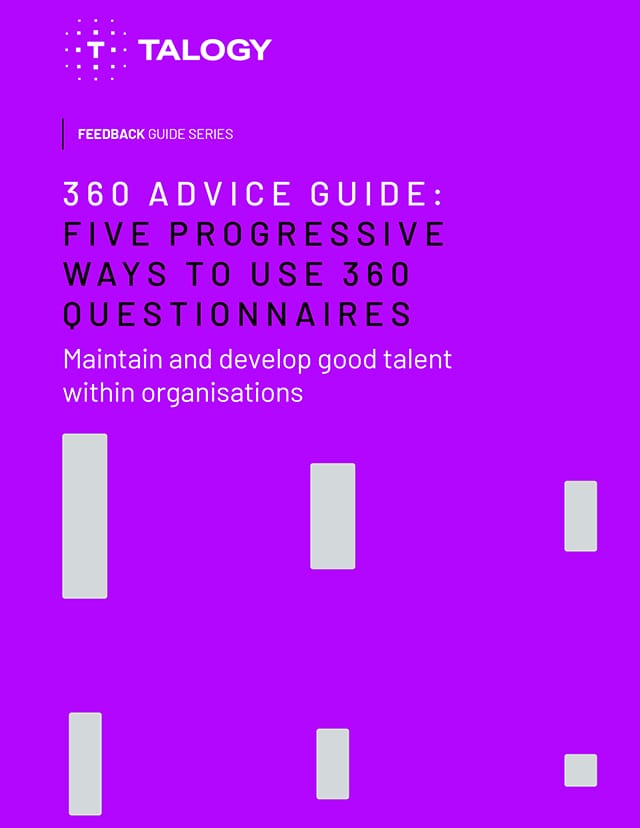Written by Alexis Chick, Senior Consulting Associate
Coaching at work continues to grow as a popular method for developing a company’s workforce, particularly at higher leadership levels. According to a recent survey conducted by Sounding Board, Inc., more than 70% of organisations invest in coaching for their directors and vice presidents, though more and more are considering engagements for lower-level leaders and even individual contributors.
At this year’s Society for Industrial and Organizational Psychology (SIOP) conference in the US, Talogy assembled an impressive panel of experts who leveraged their experiences to share important lessons they have learned from challenging coaching relationships and explored the fundamentals behind establishing a good foundation for a successful coaching engagement.
Coaching tip #1: Probe into the problem
Having a strong understanding of the issue or reason why an individual has been selected for coaching at work is imperative; otherwise, developmental actions may not be targeting the correct behaviour. To ensure that the critical behaviour is at the forefront of the coaching engagement, our panellists strongly recommend probing further, asking ‘5 Whys’ to uncover the core issue. Using various formulations of the simple question ‘Why?’ at the start of a coaching relationship will help not only the coach, but also the coachee to have more clarity around the problem, and thus be better able to address the situation. Taking the leader or sponsor at face value instead of asking why could result in a missed or wasted opportunity.
Coaching tip #2: Leverage assessments and other data
Similar to probing, our panelists also suggested utilising assessments to have an objective and unbiased view of the coachee and their natural tendencies, preferences, and behaviours. A psychometric assessment may provide the coach with valuable insight at the start of an engagement that can help to better understand the individual’s behaviours and actions. Depending on the length of the engagement, assessing both prior to and at the conclusion of the relationship can be helpful, not only to see the growth but also to demonstrate that value to the organisation.
In cases where the coachee is a people leader, beginning and ending with a 360 can add even more value, particularly when the coaching engagement is due to negative or ineffective people leadership. 360s, whether survey- or interview-based, can also be powerful tools to help a leader with lower self-awareness recognise how others perceive them and highlight any blind spots or gaps.
Coaching tip #3: Reframe the situation
Although coaching at work has seen a lot of proliferation recently, that does not necessarily mean that all individuals are receptive to coaching. This can present a significant challenge for the coach, but it is not impossible to work around. The panelists shared that – particularly at the start of the engagement – taking the focus off of the individual can be a helpful strategy to make the coachee feel more comfortable and more open to the process. This can be achieved by spending time with the coachee talking specifically about their team and how they are functioning as a unit. Taking a step back to consider how the team functions and how the leader can better drive results through them may help the leader to feel less confrontational or uncomfortable, but still address necessary issues related to their leadership.
Coaching tip #4: Be flexible
In today’s day and age, there are a number of ways to deliver a coaching session, whether that be over the phone, in person, or via a web conferencing platform. While our panellists agreed that they found in-person sessions to be most enjoyable for them, they also agreed that there is no one best way to connect with their coachee.
They recommend taking the lead from the coachee and ensuring they are comfortable with the level of formality and meeting approach. One panellist even shared that he has conducted coaching sessions over the phone while both he and his coachee were walking their dogs – a practice he began during the pandemic but has continued after seeing the positive effects. Shared moments of humanity such as this and remaining flexible to the preferences of the individual help to build a strong foundation and connection that cannot be replicated by forcing a specific expectation or format.
Fundamentally, each of these tips demonstrates that a positive and effective coaching relationship is built on understanding, interpersonal sensitivity, and respect. Although there are various reasons why an organisation might proceed with coaching for their employees – whether that’s to develop a specific competency, improve team synergy, or help a leader be more effective during times of organisational change – building a strong relationship and having a good understanding of the issues at hand are at the core of a successful coaching relationship.



